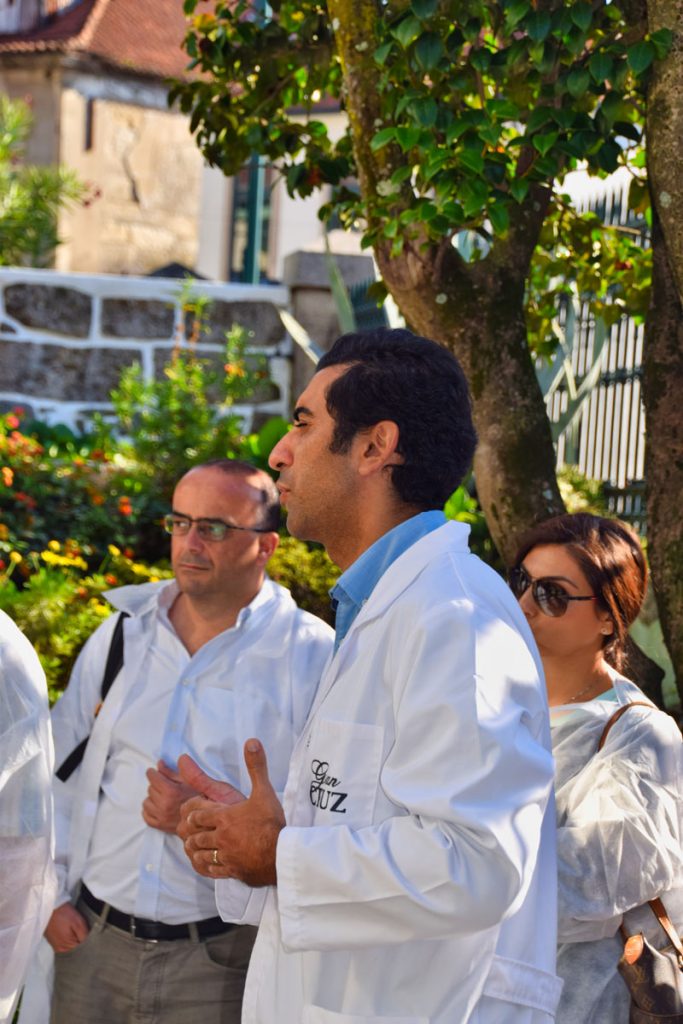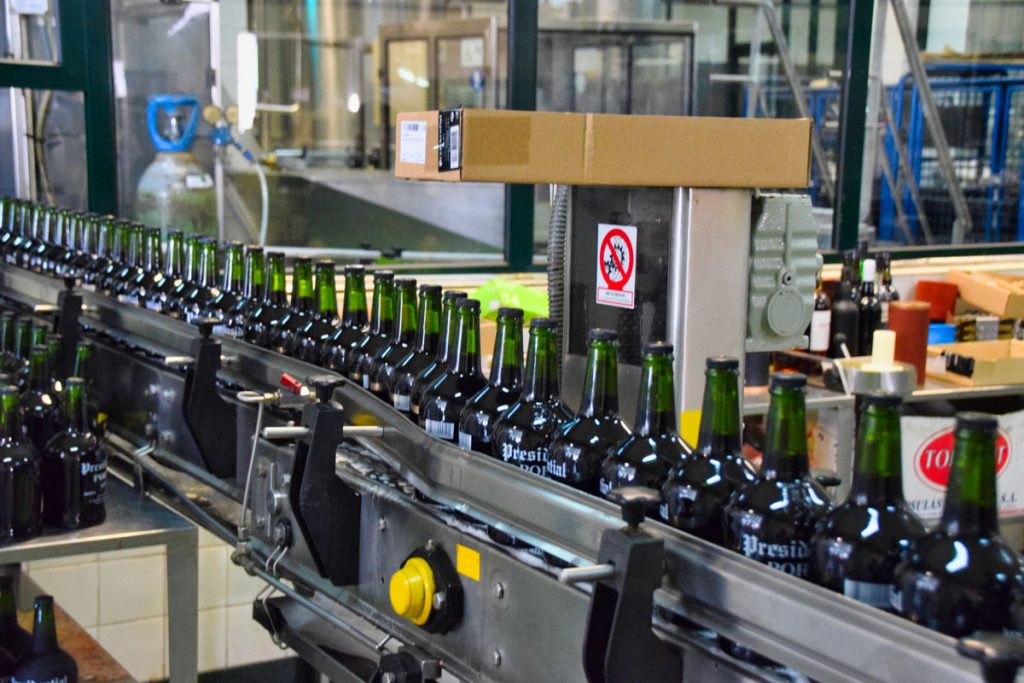Day 2 – Monday
J.H. Andresen
After breakfast at the hotel, we headed over to a lodge in Vila Nova de Gaia that I had never been to – J.H. Andresen.
The history of J.H. Andresen began in 1840 when, at the age of 14, Jann Hinrich Andresen joined the crew of a ship that sailed to Porto. After angering the Captain, Jann Hinrich was dropped off in Porto and his ship sailed off into the Atlantic without him. Despite not knowing the language or anyone in Porto, he found ways to make ends meet, and only five years later (in 1885) he was able to found the J.H. Andresen Port House.
In the face of World War II and the economic impact that the war was having in Portugal, the descendants of Andresen decided to sell the business to Albina Pereira dos Santos, who began revitalizing Andresen by leveraging the deep stocks of old wines to build a thriving and expanding Port business.
After dos Santos died suddenly in 1962, his son Mário Ruy Flores dos Santos took over, and continued to run the business, but with a focus on preserving much of the old stocks of wines in the Andresen cellars.
Today, J.H. Andresen’s Director is Carlos Flores, with Alvaro van Zeller close at his side as Winemaker. Carlos and Alvaro would be our guides for the day.
Carlos has an animated personality, and his passion for Andresen showed in the stories that he continually regaled us with throughout the visit. Alvaro, on the other hand, was the quiet, brilliant winemaker, whose answers to our many questions about the wines showed deep passion and deep respect for his trade.
|
|
|
We sat down in the barrel room and began a great, educational tasting, starting with some Ruby Ports, then moving on to Andresen’s specialty – Tawny Ports.

2011 J.H. Andresen Unfiltered Late Bottled Vintage Port – Bottled “last week.” Dark ruby-purple in color. Opaque except for right at the very edge of the wine. Some eucalyptus and herbal notes on the nose, with some dark fruit underlying. Rich, vibrant cassis on the palate with great structure and well-balanced tannins. The nice tannins follow through on the long finish. 90 points. 9/28/2015
2011 J.H. Andresen Vintage Port – Dark purple center, with almost no transparency even on the edges. Herbal notes and some black fruit on the nose. Grippy tannins on the mid-palate. Amazing intensity of red currant / cassis. Firm, structured tannins resolve on the long finish. 91 points. 9/28/2015
2008 J.H. Andresen Unfiltered Late Bottled Vintage Port – Bottled in 2011. Opaque, dark purple with minimal transparency at the edges. Blueberry and some mint on the nose, with some herbal notes underneath. Intense blackberry and black currant on the palate. Very long, unctuous finish with balanced tannins and waves of fruit riding it out on the long finish. 92 points. 9/28/2015
2003 J.H. Andresen Unfiltered Late Bottled Vintage Port – Bottled in 2008. Dark purple with some garnet peeking through. Some bricking on the edges. Herbal notes (esteva?) on the nose. Bright red fruit on the palate with rounded tannins and smooth finish. Just a touch of cinnamon on the finish. The winemaker thinks this wine needs about 2 more years of aging. 89 points. 9/28/2015
J.H. Andresen 20 Year Old White Port – Pale orange in color with some tinge of green on the meniscus. Orange peel with some herbs and spice on the nose. Unctuous flavor profile, with nuts, some herbal notes on the palate and some sharp, complex acidity. Long finish with some orange or tangerine notes. 93 points. 9/28/2015
1997 J.H. Andresen Colheita Port – Bottled in 2015. Orange-amber in color. Cigar box and orange spice on the nose. Very compact, intense concentration of flavor on the palate. Crazy complex nuts and orange spice, caramel, and a touch of herbs. Every sip uncovers some new component of the wine. Extremely long finish. This Colheita will just get better and better. 93 points. 9/28/2015
1991 J.H. Andresen Colheita Port – Bottled in 2015. Amber-orange in color with some greening on the edges. Toffee on the nose with some mint or herbal notes. Another great Colheita with good concentration of flavors. Caramel and orange notes on the very full body. Long finish with some slightly woody notes. 94 points. 9/28/2015
1980 J.H. Andresen Colheita Port – Bottled in 2015. Orange with an amber center. Herbal notes on the nose. Intense concentration of flavors. Unctuous orange peel and some surprising prune notes. 92 points. 9/28/2015
J.H. Andresen 40 Year Old White Port – Orange in color with a slight greenish tinge. Some tropical notes on the nose, which is a little subdued due to the bottle just being opened. Citrus peel with some touches of butterscotch. Great acidity! 93 points. 9/28/2015
1968 J.H. Andresen Colheita Port – Bottled in 2015. Comes from a “non-vintage” year. Clear, with a nice amber-orange color. Mocha, toffee and very old leather on the subtle nose. Wonderful concentration of flavors on the palate – espresso, orange peel, and caramel. Crazy wave after wave of flavor, including herbal notes and some burnt sugar (crème brulee, caramel). 93 points. 9/28/2015
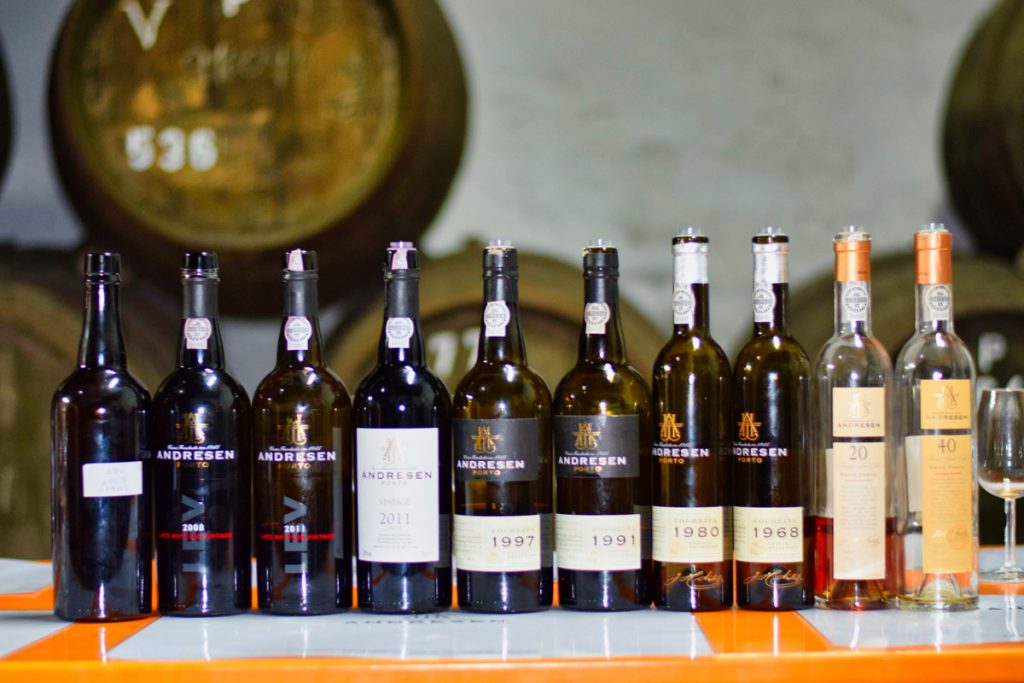
After tasting through the main flights, we got to sample two of the extraordinary rarities in the Andresen cellars: an 80-90 year old Tawny Port, and a “Quinine” Port from the World War II era.
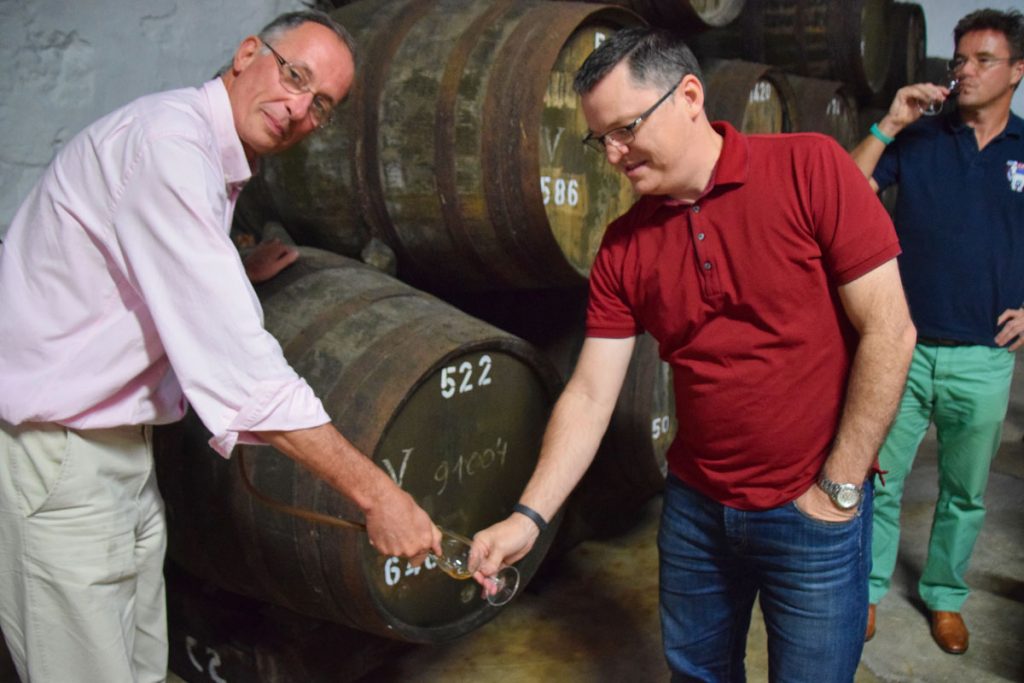
Andresen “VVVV” Old Cask Sample – 80-90 years old. Dark amber in color. Pralines and deep, intense mahogany notes on the nose. Layer upon layer of flavors – maple, nuts, honey, and caramel. N/R. 9/28/2015

We also got to try a very rare type of Port – one containing Quinine! The story of this Port was that to help combat malaria in World War II, British troops in Angola were shipped Port wine that contained Quinine.
Andresen “Quinado” Cask Sample – 60-70 years old. This Port contains quinine and was exported to British troops in Angola in World War II to combat the risk of malaria. Eucalyptus and (not surprisingly) medicinal notes. N/R. 9/28/2015
After a wonderful tasting at Andresen, it was sadly time to head off to lunch. We thanked Carlos and Alvaro for their hospitality and snapped a few goodbye photos on our way out.

C. da Silva
After lunch, we headed back to a lodge that we hadn’t visited since 2010, C. da Silva.
C. da Silva can trace its roots back to 1862, when it was founded under the name Correa Ribeiro e Filhos. Clemente da Silva, who arrived from Brazil in 1933, inherited the company through his wife’s family, and in 1957, the name of the company was changed to C. da Silva. In the early years, the company focused on the Brazilian market, later expanding to the US and Europe. After Clemente’s death, the family sold the company in 1980 to the Spanish group Nueva Rumasa. It was acquired by Grand Cruz Porto in 2007.
Large stainless steel tanks loom over the C. da Silva facility high up on a hill in Vila Nova de Gaia. What it lacks in charm compared to the small, old, dusty lodges down on the riverfront, it more than makes up for in being able to experience the pure size and scale of their production business.
C. da Silva bottles under a number of name brands, including C. da Silva, Presidential, and the Dalva brand (derived from taking “da Silva” and dropping the “Si”).
We arrived at C. da Silva in the early afternoon and were greeted by our old friend Gonçalo Devesas, Sales Manager at C. da Silva.
|
|
|
We set out on a tour of the facility, but because we would be walking out onto the production floor, we had to don lab coats and protective hats. In addition to the scale of the production facilities, it was also interesting that they had so many different methods of storing their stocks of over 12 million liters of Port wine.
|
|
|
|
|
|
The stainless steel vats at C. da Silva have a capacity of over 6.5 million liters. In addition to Stainless and Glass-lines concrete vats, there are also a large number of wooden vats.
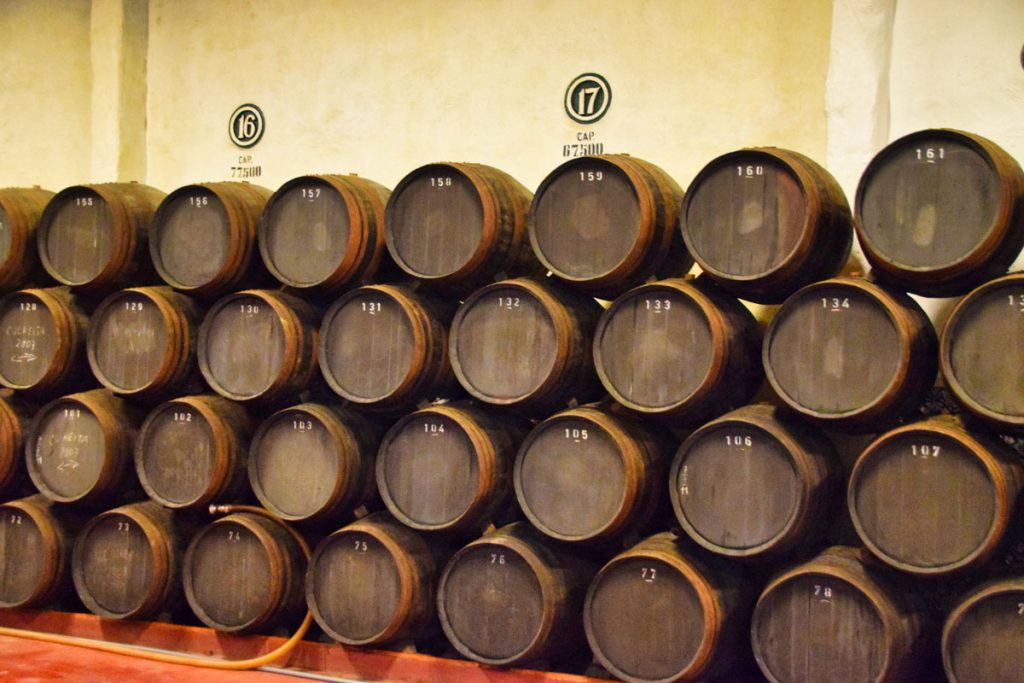
There are over 3,000 French oak barrels, where most of the older aged Tawny Ports are kept.

Finally, there are over 250,000 bottles of Port wines stored at the facility.
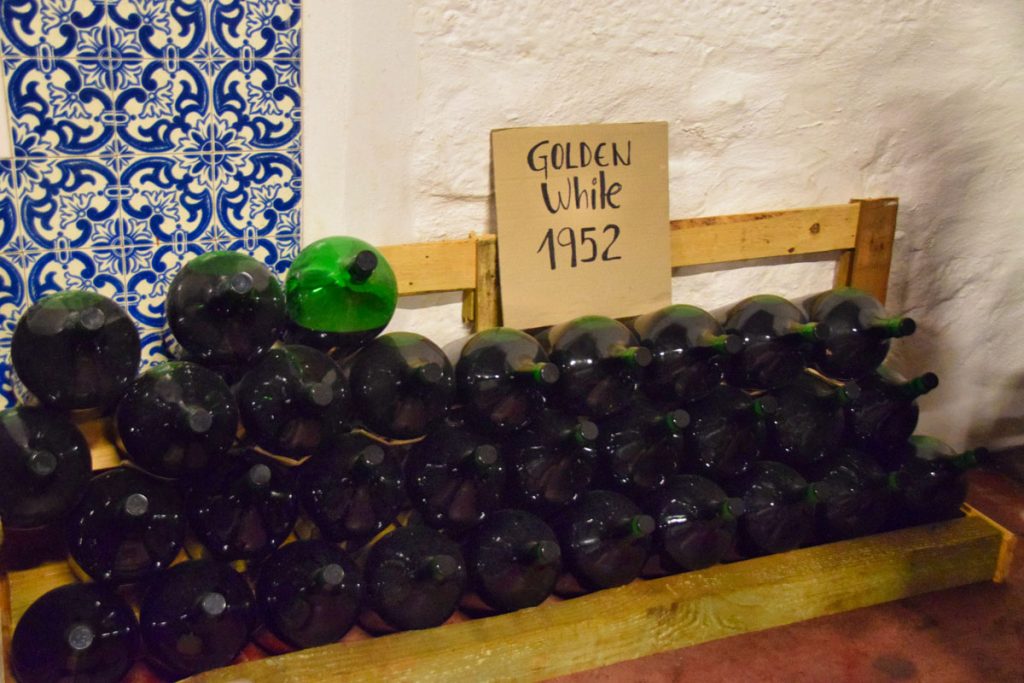
We adjourned to barrel room, where we were also joined by Elsa Couto, Export Director for C. da Silva. We had a lineup that included 10, 20 and 40-year-old white Ports, and of course, some of their legendary Golden White Colheita Ports.
|
|
|
Dalva 10 Year Old Dry White Port – Bottled in 2015. Clear, light amber-pink in color. Some tropical fruit and some heat on the nose. Some light hints of caramel and honey on the palate. Good complexity and acidity, with some pronounced heat. 89 points. 9/28/2015
Dalva 20 Year Old Dry White Port – Bottled in 2015. Amber with pink hues. Honeysuckle on the nose with a touch of spirit. Light, nutty notes with some noticeable alcohol on the finish. 88 points. 9/28/2015
Dalva 40 Year Old Dry White Port – Subdued nose. Not a lot of discernable aromas coming off the nose right now. Some orange peel on the nose and still some heat. Buttery smooth caramel notes on the palate, with some tropical fruit underneath. Medium-full bodied with bright acidity. 91 points. 9/28/2015
1971 Dalva Golden White Colheita Port – Bottled in 2015. Light orange in color. Some spirit and woody notes on the nose. Full body with flavors of pralines and orange spice. Some spice on the mid-palate, and a long finish. 92 points. 9/28/2015
1963 Dalva Golden White Colheita Port – Light amber in color. Orange peel and some sea salt on the nose. Great, balanced intensity. Crème Brule and toasted almonds on the palate. Long finish with bright acidity. 93 points. 9/28/2015
Gran Cruz, owner of C. da Silva, has been managing the vines at Quinta do Ventozelo since 2011, but outright purchased the Quinta in October 2015. We were also able to try the 2011 Late Bottled Vintage Port from Quinta de Ventazelo:
2011 Quinta de Ventazelo Late Bottled Vintage Port – Primary fruits on the nose – blackberry and crushed blueberry. Very dark purple in color. Huge primary fruit on the palate – this will be an interesting wine. N/R. 9/28/2015
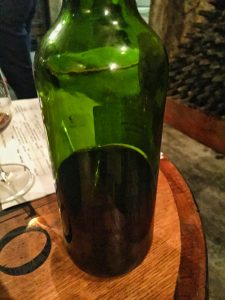
1989 Dalva Golden White Colheita Port – Cask Sample. (The year of this Golden White Colheita has not yet been made public.) Very smooth wine. An elegant, approachable wine with balanced caramel and toffee notes. Long finish with great acidity and balance on the finish. 90 points. 9/28/2015
It was great to see Gonçalo again, but after a fabulous day tasting Port in Vila Nova de Gaia, it was time to head off to dinner and then for a good night’s rest at Hotel Teatro.




